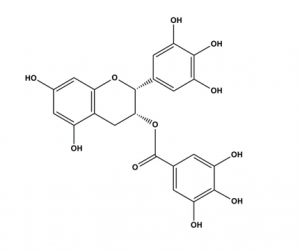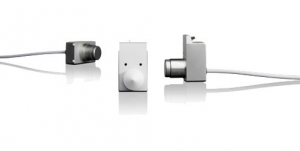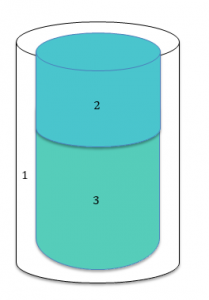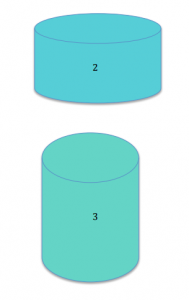Among the finer things in life, few moments compare to your morning cup of tea in your plaid pajamas with a sleeping cat snuggling into your lap by the fireside as you watch the lightly falling snow christen the mountaintops. But, who really has time for all of that? In reality, we are busy, on-the-go people who are just looking to get their morning caffeine fix. And fast.
Tea, however, is a tricky business. At times you overbrew, and at other times you underbrew. This creates massive problems for those in the tea drinker sphere. The time for sub-par tea drinking experiences are finally over. The Veloci-Tea Diffuser will automatically give you perfectly brewed tea every time.
__________________________________________________________________________________
Tea is filled with many bioactive components such as alkaloids like caffeine, vitamins, and polyphenols (Higdon). The Veloci-Tea specifically focuses on the class of polyphenols called flavonoids. Flavonoids are compounds with strong antioxidant properties that occur in many kinds of plants, including the tea leaves used in your delicious morning cup of tea. Flavonoids can be further classified according to their chemical structure. In tea, the subgroup of flavonoids called flavan-3-ols (flavanols) is the most commonly present. The flavanols that are found in tea are epicatechin (EC), epicatechin 3-gallate (ECG), epigallocatechin (EGC), and epigallocatechin 3-gallate (EGCG). The concentration of each of these flavanols in various types of teas can be found in Table 1.
Table 1: Flavanol content [mg/100 mL] of tea (Higdon).
| Type of Tea(1) | EC | ECG | EGC | EGCG | Thearubigins |
| Tea, white, brewed | (2) | 8.3 | 18.6 | 42.4 | (2) |
| Tea, green, brewed | 8.3 | 17.9 | 29.2 | 70.2 | 1.1 |
| Tea, oolong, brewed | 2.5 | 6.3 | 6.1 | 34.5 | (2) |
| Tea, black, brewed | 2.1 | 5.9 | 8.0 | 9.4 | 81.3 |
| (1)1 g of tea leaves infused in 100 mL of boiling water (1% weight/volume)
(2)The lack of a value for a particular flavonoid in a food in the database does not imply a zero value, but only that data were unavailable. |
|||||
As gleaned from the table above, the EGCG is the flavanol with the highest concentration in the main types of tea on average; the chemical structure of EGCG is shown below in Figure 1. Everyone’s ideal cup of tea will contain slightly different concentrations of EGCG depending on the brewing time. As the tea is brewed, EGCG is diffused from the tea leaves into the hot water. Longer brewing times therefore correlate to higher concentrations of EGCG in tea. Because of this relationship between EGCG, brewing time, and flavor, the Veloci-Tea Diffuser targets this compound EGCG to provide each user with the perfect brew every time.
 Figure 1: Chemical structure of epigallocatechin 3-gallate (EGCG). (Snitsarev 2017)
Figure 1: Chemical structure of epigallocatechin 3-gallate (EGCG). (Snitsarev 2017)
Veloci-Tea will utilize a spectrophotometer to measure the concentration of EGCG in the hot water as your tea is being brewed. A spectrophotometer is an apparatus that measures how much light a sample absorbs. Given a high resolution, spectrophotometers can yield high fidelity concentrations for a compound measured at a specific wavelength. In this instance, a spectrophotometer will be used to measure the concentration of EGCG at its absorbing wavelength of 275 nm (Snitsarev). Since the Veloci-Tea is for on-the-go use, a spectrophotometer of a small scale must be used to ensure practicality. The Veloci-Tea will therefore use the Carl Zeiss Monolithic Miniature Spectrophotometer (MMS), pictured in Figure 2. With a resolution of 3 nm in the UV spectrum, the Carl Zeiss MMS is a great choice for measuring the concentration of EGCG at a wavelength of 275 nm.
 Figure 2: Carl Zeiss Monolithic Miniature Spectrophotometer (MMS).
Figure 2: Carl Zeiss Monolithic Miniature Spectrophotometer (MMS).
With all of this science jargon in mind, it is now time to introduce the solution to all of your tea worries: the Veloci-Tea!


Figure 3: A schematic of the Veloci-Tea Diffuser.
The Veloci-Tea consists of 3 separate parts. Part 2 is the brewing lid where the spectrophotometer is housed, and Part 3 is the tumbler. Part 1 is the insulator, provided through our partnership with S’well®, that will be used to maintain the temperature of hot water in the brewing lid and the eventual tea in the tumbler as well. To use the Veloci-Tea, loose tea leaves and hot water are added to the brewing lid. A spectrophotometer will measure the concentration of EGCG in the hot water as the diffusion occurs. Once the desired EGCG concentration has been measured, the perfectly brewed tea will be dispensed into the the tumbler. The tumbler is removable from both the insulator and the brewing lid to support the active lifestyles of our target customers.
The intent of the Veloci-Tea is to control the concentration of EGCG in tea. The basis for determining the desirable range of the measured EGCG concentration will be determined experimentally by each user to accommodate everyone’s unique tastes. Instructions on how to create these set points will be provided with the Veloci-Tea. The Veloci-Tea Diffuser will come programmed with predetermined EGCG concentrations that can easily be changed by the consumer to match his or her personal taste preferences.
The Veloci-Tea Diffuser is additive to the user experience. Many people can make tea on their own; however, having the same great cup of tea day in and day out is what we intend to provide to our target customer base. We intend to provide highly reproducible cups of tea that will positively affect the user experience.
This product improves the tea drinking experience for those who are a bit more scattered and do not have the time nor patience to wait and watch their tea. The Veloci-Tea Diffuser will make the experience more practical, effective, and less hectic. Our product will make the on-the-go tea drinker more satisfied, as well as less irritable.
The manipulated variables in Veloci-Tea’s brewing process include brewing time, amount of water, amount of tea leaves, and type of tea. In the user interface, the amount of water, amount of tea leaves, and type of tea is predetermined by the consumer. These variables can be considered constant throughout the process, though they are still manipulated variables because they can change between uses.
Brewing time directly affects the EGCG concentration in the tea. As the tea is brewed, EGCG is diffused from the tea leaves into the hot water. Longer brewing times correlate to higher concentrations of EGCG in tea. The brewing time is manipulated according to the set point concentration of EGCG on the Veloci-Tea control panel. This manipulated variable is the only variable that can be actively changed during the tea brewing process.
The amount of water added to the diffuser has a functional operating range, from a realistic minimum to the maximum volume of water that can be contained within the Veloci-Tea tumbler. As the volume of water is increased, either the brewing time will be increased as more EGCG will need to be diffused into the hot water to reach the set concentration or more tea leaves will need to be added to maintain a constant brew time. Complementary to the amount of water is the amount of tea leaves added. The amount of tea leaves that are added prior to the brewing process will influence the time it takes for the desired EGCG concentration to be reached.
The Veloci-Tea is equipped to brew various types of tea including black, oolong, white, and green. These different types of tea contain different amounts of EGCG as illustrated in Table 1, and therefore the optimal concentration of EGCG in brewed tea depends on the type of tea used. Because of this influence, it is important that the type of tea is defined on the user interface prior to brewing such that the correct set point concentration of EGCG is controlled for.
Changes to these manipulated variables are made to reach the desired EGCG concentration in tea, which is our controlled variable, in order to make the most delicious cup of tea possible.

The temperature of water is another component that affects both the taste of tea, as well as the rate of diffusion of the tea into the water. Temperature fluctuations cause the water temperature to be classified as a disturbance variable. If the tea is too hot or too cold, the consumer will not enjoy their tea, even if the tea is brewed to the perfect EGCG concentration. Because no additional heating will occur after the hot water is added to the brewing lid, the temperature of the tea will only decrease over time due to heat losses. Thankfully, we have partnered with S’well® to add insulation technology to our diffuser in order to minimize these heat losses and maintain the temperature of the hot water that is added to the brewing lid.
In addition to user satisfaction, the temperature of the water also affects the rate of diffusion of the tea components in water. This affects the main manipulated variable within the process, brewing time. To mitigate this potential disturbance, a feedback loop will be used.
A feedback loop would be most appropriate for our application. A feedback loop takes a measurement downstream of manipulated variables and potential disturbance variables, and then it feeds the information back upstream of the manipulated variable. For the Veloci-Tea Diffuser, the spectrophotometer will measure the absorbance of EGCG in the tea. The reading will then be passed through a process schematic assessing the concentration’s deviation from the set value provided for the specified tea type. The controller will send a signal to the collapsible bottom to either remain closed if the set point concentration has not yet been reached, or to open if the set point concentration of EGCG was measured. Once the ideal concentration of EGCG has been reached, the tea is deposited in the tumbler and the brewing lid can be removed.
At the current time, further experimentation and research is being done to find a more feasible testing system so as to lower the cost of the Veloci-Tea Diffuser in order to make it more economically accessible to the average user.
Sources
Snitsarev, Vladislav et al. “The Spectral Properties of (-)-Epigallocatechin 3-O-Gallate (EGCG) Fluorescence in Different Solvents: Dependence on Solvent Polarity.” Ed. Heidar-Ali Tajmir-Riahi. PLoS ONE 8.11 (2013): e79834. PMC. Web. 24 Mar. 2017.
Higdon, Jane. “Tea.” Oregon State University Micronutrient Information Center. Ed. Richard Draijer,
Guus Duchateau, and Suzanne Einother. Linus Pauling Institute, Jan. 2005. Web. 23 Mar. 2017.
“MMS Series Spectrometer Modules.” Technology for Spectrophotometers. Tec5USA, 2017. Web. 23 Mar. 2017.

‘Veloci-tea’, a cleverly named product with a clever approach to solving a flir-tea issue with that morning cup of tea! A cup of tea first thing in the morning, can make or break the right mood to start your day! Finally a solution to all those times, I’ve had a tea-rrible cup of tea simply because I left the tea brew for longer than my ‘optimal’ time.
As engineers we make processes better and more desirable and in my opinion ‘Veloci-tea’does just that!
Changing the world one cup of tea at a time!
Looking into the tea-chnical aspect of the process, the makers of veloci-tea have clearly stated the control, disturbance and manipulated variable! Although, the various manipulated variables have been mentioned, an insight into how the ‘constant’ assumption of the manipulated variables controlled by the consumer influence the system, will be helpful for the reader!
In addition to this, more information into how the desired set point can be set will be helpful for the reader to understand the process better. Along with this, details about the kind of response the controller will be using- that is proportional, integral or derivative response could be potential details that would be interesting to talk about!
In conclusion, I think Veloci-Tea is a great product with great viability to work in our lives. Adding some details on the economics of the product and safety parameters concerning the use and overall life of the product will be a good way to persuade the buyer!
On the whole, who wouldn’t want to wake up to a perfect cup of tea every morning?
The idea of the Veloci-tea is quite fascinating. While I do believe that the average citizen will not appreciate this invention, the true tea drinking community will definitely love it. As an avid tea drinker myself the inconsistency in homemade brewed tea is definitely and issue. The Veloci-tea could definitely improve my life and improve Sunday morning tea time.
The controlled variable makes a lot of sense. Controlling the diffusion amount of EGEC is an interesting idea, and based on the research provided sounds like a very good solution into keeping the flavor constant. The manipulated variables presented are brew time, amount of tea leaves and the amount of water. The only one that the Veloci-tea is manipulating is the brew time since the water and tea leaves amount are both decided by the user. While this seems to be a limiting concept, the brewing time is the most optimal way of addressing the issue. The disturbance variable mentioned is the Temperature. While I agree with the idea of pouring the tea into the insulated container, my only concern is that if the tea is needed to be drunken quickly is there a way for it to cool quicker instead of just keeping it warm for longer. This aside I believe that this is an accurate disturbance variable, but based on the assumptions made I would consider adding amount of water and amount of leaves to the disturbance variables since these aren’t changed by the Veloci-tea but by an outside factor. The temperature disturbance is then controlled through the insulation and you could control the leaves and water amounts using instructions or the size of the product.
I think that is definitely has the ability to become a product that is used, however this depends a lot on the cost. I think with recent cultural movements and age groups there will always be people who prefer drinking tea over coffee, but I fear that if the gadget is too pricey it won’t be used. I personally don’t see the average person buying a 15-20$ piece of equipment just to help them improve the perfect taste of their tea in the morning. It could however be a cool gift that people give to family members and friends, but I believe that for it to be used a lot it must be fairly cheap. I don’t know how much the MMS costs but it potentially could be fairly expensive.
“Veloci-tea” is such an amazing idea which is not necessary to life but has the ability to significantly improve life quality. As mentioned at the beginning of the article, tea contains several antioxidant components which is beneficial to health. Drinking tea is a good habit which should be encourage. However, as people today become hard to sit down and enjoy the free time, brewing tea by themselves seems to be a waste of time. As a tea drinker myself, I prefer to brew tea by myself as I enjoy the process but this does not apply to other people obviously. Veloci-tea serves not only to avoid waste of time but also encourage the habit of drinking tea as the process of brewing tea becomes convenient and interesting.
Manipulated and disturbance variables are clearly listed and the reason for a feedback loop makes logical sense. The main idea of Veloci-tea is to control concentration of EGCG, a major component which diffuse a lot into water. This is achieved by measuring the absorbance of solution using a spectrophotometer and when the absorbance reaches set points, brewed tea will be dispersed into a container. Brewing time is the manipulated variable which determines the taste of tea and temperature is the major disturbance variable. As temperature is relatively hard to control directly, a feedback loop is favored so that the source of error can be ignored.
The biggest advantages for Veloci-tea are convenience, accuracy and automation. And the designer did maximize these three through the design process. Two components of Veloci-tea significantly improve convenience and make the whole system more realistic. The first one is a small spectrometer. No one will be willing to carry a huge, heavy spectrometer for measurement just in purpose of drinking tea. The second one is the insulator, which minimizes the effect of temperature. As mentioned before, temperature has a significant effect on quality of tea. Guests who purchase Veloci-tea are pursuing a special taste, or a specific concentration of EGCG actually. An insulator serves to minimize the effect of temperature even after the process of brewing, which is significant as most people do not drink tea immediately after brewing. Accuracy is achieved with the spectrophotometer which precisely measures absorbance, or concentration. Based on the signal from spectrophotometer, the control system respond automatically.
The biggest problem I think will be cost and labor. As every customer has their special request, it takes a long process to test the absorbance/concentration they desire and put into Veloci-tea as set point. The whole system will be more realistic if they can find an automatic way to decide the set point.
Overall, Veloci-tea is an excellent idea and it has the ability to improve life quality of targeted guests. The “unique” service it can provide follows today’s trend of personal tailor. I really look forward to see it in market and hopefully I can get one for my grandma…She doesn’t like brewing tea ☹
I like the idea of Veloci-Tea since most people including me, are too impatient to brew tea correctly or don’t know how to make tea at all. I read from different resources that 80% of tea drinkers can’t wait patiently until their tea is perfectly brewed with the best flavor. As mentioned in the article, Veloci-Tea utilizes a spectrophotometer to measure the concentration of EGCG in the hot water as the tea is being brewed and this is interesting since anybody can have a perfectly made tea every time.
The article does a great job in selecting the controlled, manipulated/disturbance variables for this product. Choosing the feedback loop for this application makes sense since it takes measurements of manipulated and disturbance variables and feeds the information back to the manipulated variable. Also, considering brewing time, the amount of water and type of tea as the manipulated variables and the water temperature as a disturbance variable makes sense. I like the idea that Veloci-Tea can brew various types of tea (black, oolong, white and green) since different people have different choices and this makes the product to be wanted by a variety of people.
I can see this application being used in many places since there are many tea lovers in the actual world and who doesn’t want to have a perfectly brewed tea. My only concern for this product is its cost. Since the product is using a spectrophotometer to measure the concentration of EGCG, this might make it expensive for some tea lovers to afford. According to the article, further experimentation and researches are being done to lower the cost of the product, so there is a hope to find one of this product in everyone’s home.
Right off the bat, I love this product! What a clever idea! I love drinking tea and it is a great source of caffeine as an alternate to coffee. Right now, I own a travel mug that has a steel infuser connected to the lid. As of now, it is trial and error to determine how much loose-leaf tea leaves to put in and how long I should allow it to steep for. This device seems to still have some trial and error to the process in order to discover my ideal EGCG levels, but it seems to be a much more fine tuned process. Also, once I find what my favorite EGCG levels are, I am going to be able to get the same cup of tea over and over again. I may not be able to have the same reproducibility with normal tea infusers.
The controlled variable is concentration of EGCG in the tea. The manipulated variables are brewing time, amount of water, amount of tealeaves, and type of tea, but brewing time is the only one that will really be manipulated because the other three variables will be held constant throughout the process, even though they can change from trial to trial. The disturbance variable is the temperature of the water. A feedback loop with your defined values of CV/MV/DV makes sense and is very practical for the system you have defined.
Is there a correlation between caffeine levels and EGCG levels? Typically green tea has the most amounts of caffeine and then white tea, followed by oolong and black tea. It could also be interesting for the user to be able to control the amount of caffeine in their tea, because I know sometimes I want more caffeine for studying and less for before bed. Part of this is picking different types of tea with more or less caffeine.
I like how there are three parts to your product. When I first envisioned the tea, I pictured loose-leaf tea in a filter being continuously released into the hot water, but I think the two separate sections (part 2 and 3) in your design and the collapsible bottom allows for more control.
Once the desired concentration of EGCG is reached and the tea is deposited, does the tea go through a filter, and the remaining tea leaves are removed with the brewing lid? Or are the tea leaves in the tumbler with the brewed tea?
If this product was affordable comparably to other travel tea mugs in the market, I would definitely consider purchasing the Veloci-Tea! This product is made for tea lovers, but I think it is something that they would truly love (at least I would)!
Overall I really enjoyed reading this post. It had a great tone that kept me engaged throughout the entire time. I felt that the description of the process and how the machine works overall was handled very well. I particularly liked how the user’s enjoyment was taken into consideration at every chance possible. It is also nice that it can be programmed for each individual, so that anyone who wants to use this can have their own “perfect cup of tea”. There is a limited audience to this as it does only appeal to those who drink tea. It is a product that would only really be worth the investment if the user was someone who drinks tea everyday. This will likely not be the go to choice for someone who only drinks tea a couple of times a year when they have a sore throat.
When it comes to the discussion of EGCG, there was never really a reason given as to why this was the thing that would make a perfect cup of tea. It is called a flavonoid, so I assume it has something to do with flavor. There was not a point where it was explained well as to really why EGCG is so important. ECGC is brought up continuously throughout the blog and is never fully explained. It is something that could likely be clarified in a few sentences, explaining what exactly EGCG does in tea, in a simpler way that the average consumer may understand, and why it is so important.
One issue was the language used to describe the flavonoids. It is definitely important to discuss the aspects of tea that are important, but it was described in a way that was a little too complex. The people who would be interested in the perfect cup of tea may not necessarily care where it comes from. While there are those who will be interested in the flavonoids in the tea, it was a section that cut out an already limited audience of people interested in the product. It is an important aspect, but it could have been expressed in a simpler way as to not isolate some readers. Also the table presented is not particularly helpful. It only serves the purpose to really point out that different teas have different properties. I also felt that the description of the spectrometer could have been simplified slightly as well.
The discussion of manipulated variables didn’t quite make sense. In one paragraph it was stated that there were four manipulated variables (time, amount of water, amount of leaves and type of tea). In a paragraph shortly after, however, it states that there is only one manipulated variable, that which can be changed during the brewing process. These are two contradicting definitions of the manipulated variable. The manipulated variable is the brewing time while the other things are held constant. The last paragraph is very out of place as cost was not something that was discussed at all throughout the rest of the project.
This sounds like a great product that I never knew I wanted. I personally had no idea the process of brewing tea could be so complex. I’ve never even considered how brewing time effects the taste of my tea or what chemical components are responsible for the flavor of tea. I think that the prospect of having an easy to operate device that tailors the tea exactly to the customers liking would be highly desirable.
Controlling the concentration of EGCG seems like the simplest method of managing the taste of the tea. Defining the manipulated variables as tea leaf type, mass of tea leaf added, amount of water, and brewing time makes sense. I particularly like that because once the process starts, the only variable that will change is brewing time. To me, this means that with each cup I brew, I don’t have to concern myself with how many leaves I use or how much water I put in, as the veloci-tea will just adjust the brewing time to account for my laziness. Temperature changes within the system being the only disturbance seems like a reasonable assumption. Overall I think the product would be great and I would love to get my hands on the Veloci-tea but I do have two concerns about the design.
My first concern how much this would cost based on the fact that concentration is measured by a spectrometer. Is the spectrometer a particularly fragile piece of equipment? I have to wonder if constant exposure to high temperatures would damage the spectrometer. Assuming that the veloci-tea would stay functional for a good long while, I suppose I wouldn’t mind forking over some extra money for a consistently good cup of tea with minimal effort.
Second, would it be beneficial to include some kind of stirring mechanism in the tumbler? I imagine that the concentration of EGCG wouldn’t be uniform if the water is stagnant. For example, if the spectrometer reads a concentration that matches the desired concentration, but is not representative of the entire volume of tea, than the tea produced won’t have the desired taste.
This last issue I presented may not actually be of concern considering a relatively small volume of tea is being worked with. Overall, the design of the product seems very solid and the post was both engaging and fun to read. I think the language and presentation of information would make it engaging even to a person that lacks a scientific background.